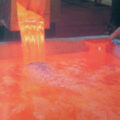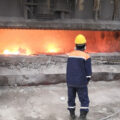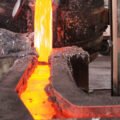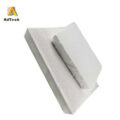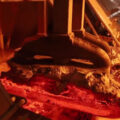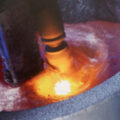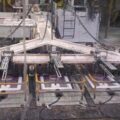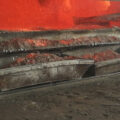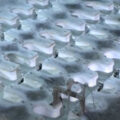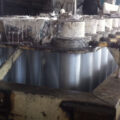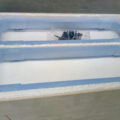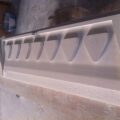The slag mixed into the ingot or other non-metallic impurities in the ingot are called non-metallic inclusions, commonly known as slag inclusions. Its fracture features are striped or flake-shaped, and the microstructure features are mostly black linear, massive, and flocculent disordered tissues, with obvious color difference from the matrix. So slag removal is important for high-quality ingot.
Non-metallic inclusions (slag inclusions) can usually be found when inspecting the transverse low-magnification test piece and fracture of the ingot. For the ingots used for extrusion of these two alloys, there should be no more than two slag inclusions on the ingot test piece, and the single area is less than 0.5mm^2, otherwise it will be rejected. Non-metallic inclusions (slag inclusions) are the most frequently occurring waste products in aluminum alloy ingots. According to statistics, by weight, ingots scrapped due to slag inclusion account for about 10% to 25% of the total waste.
Slag inclusions are usually caused by slag, lining fragments and larger oxides that fall into the ingot along with the liquid metal during the casting process.

Ways for Slag Removal
- Use clean charge.
- Carefully refine and slag off. A slag remover is used to separate the aluminum-slag to ensure a standing time, and a ceramic foam filter is used in the flow plate or funnel.
- It is possible to shorten the transfer distance, establish good transfer conditions, close all the exposed drops in the launder, flow plate, and funnel to prevent fluctuations in the metal liquid level. It is best to use the same level of casting under possible conditions.
- Thoroughly bake the transfer tools, properly raise the casting temperature, and carefully clean the furnace and other tools after casting.

